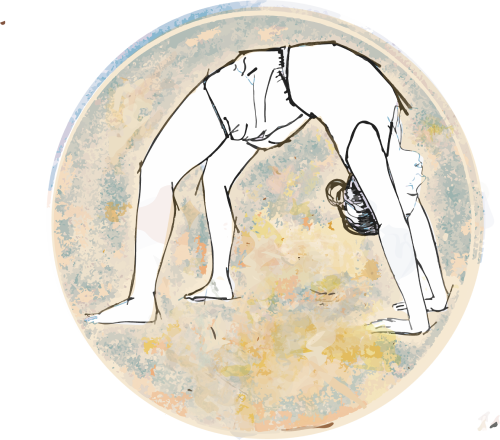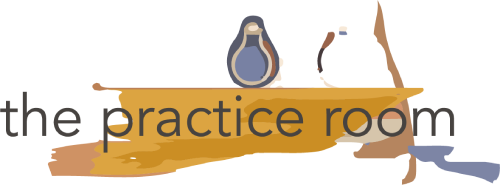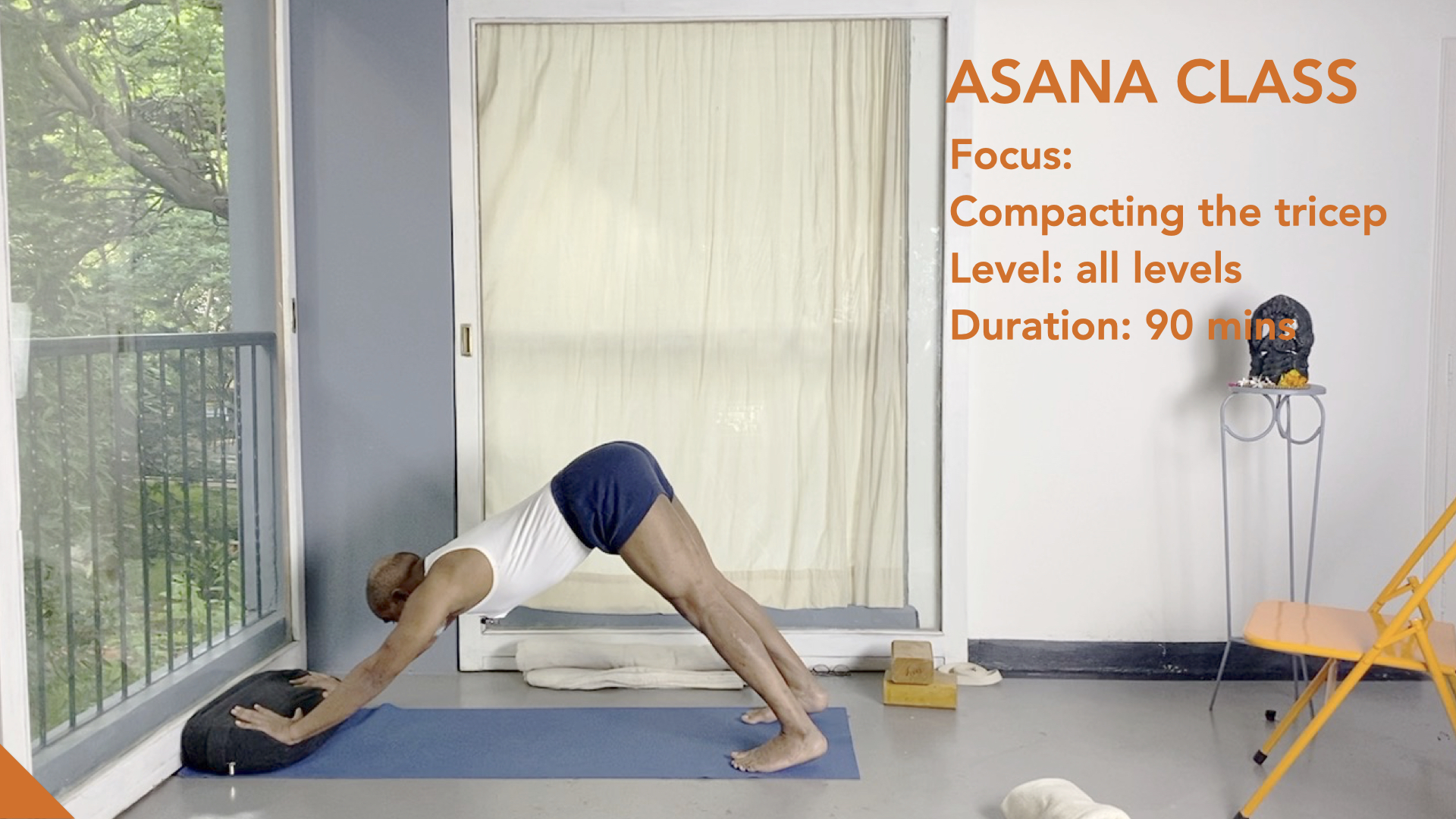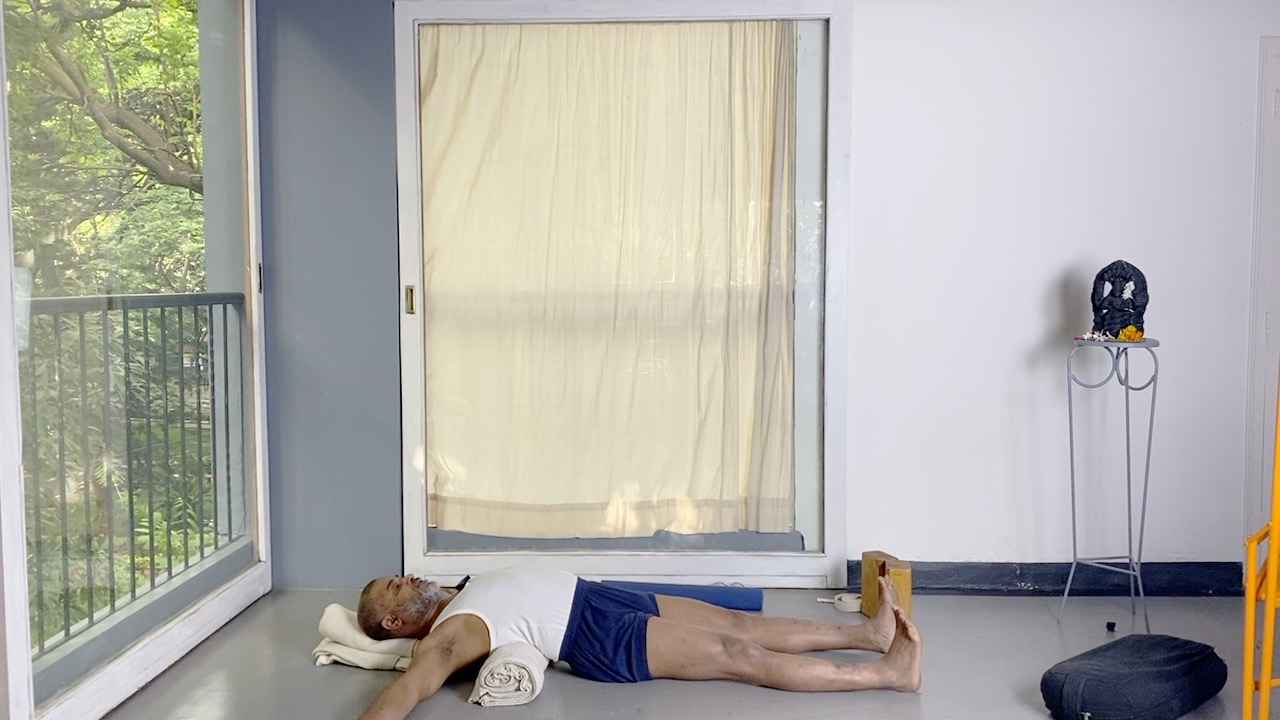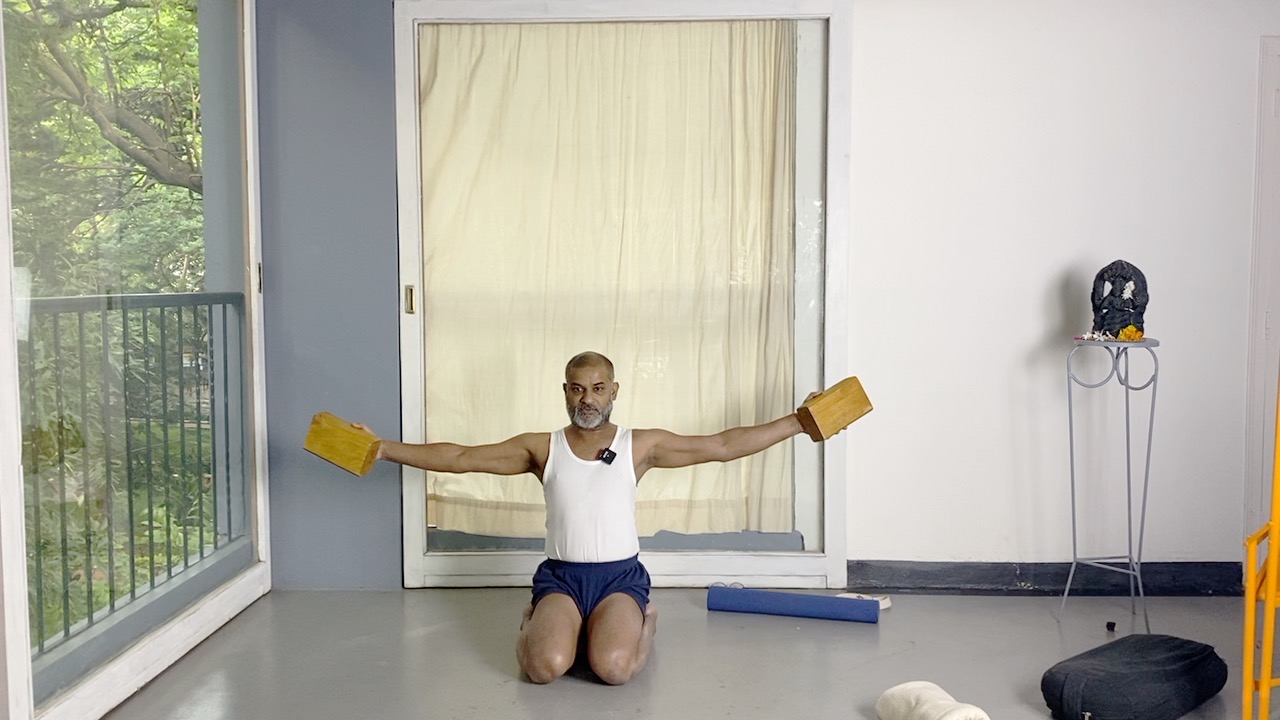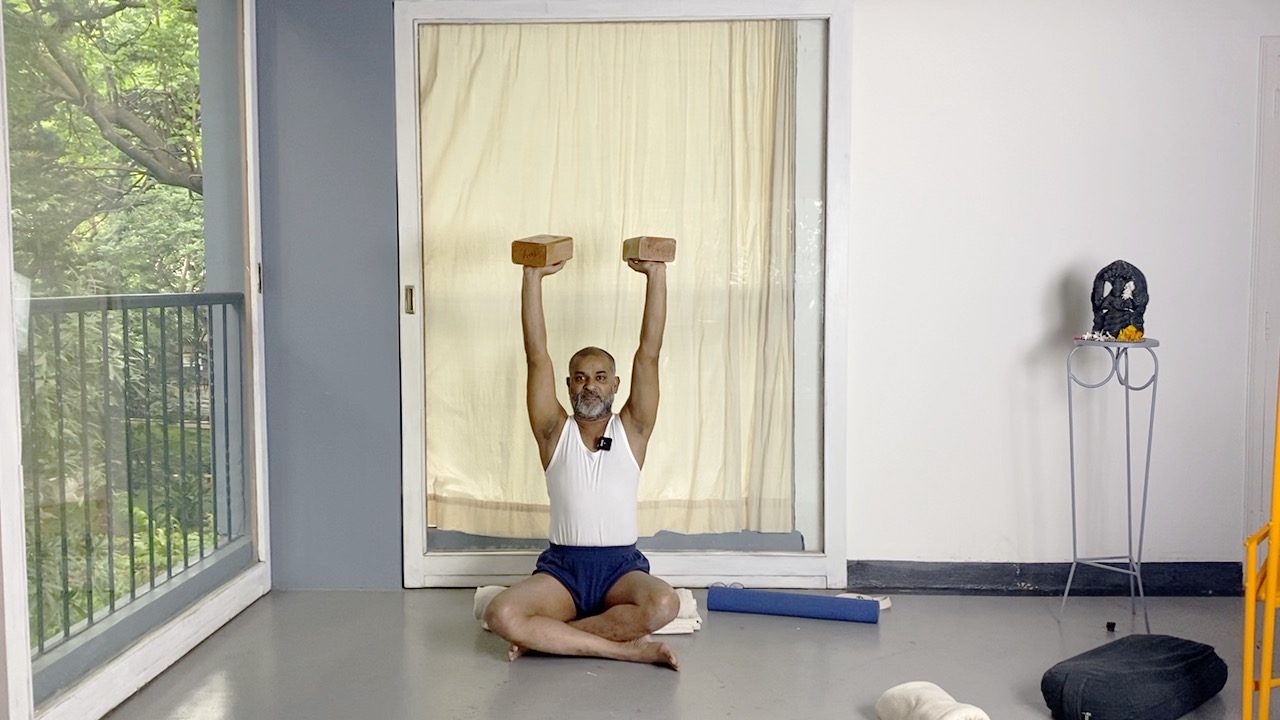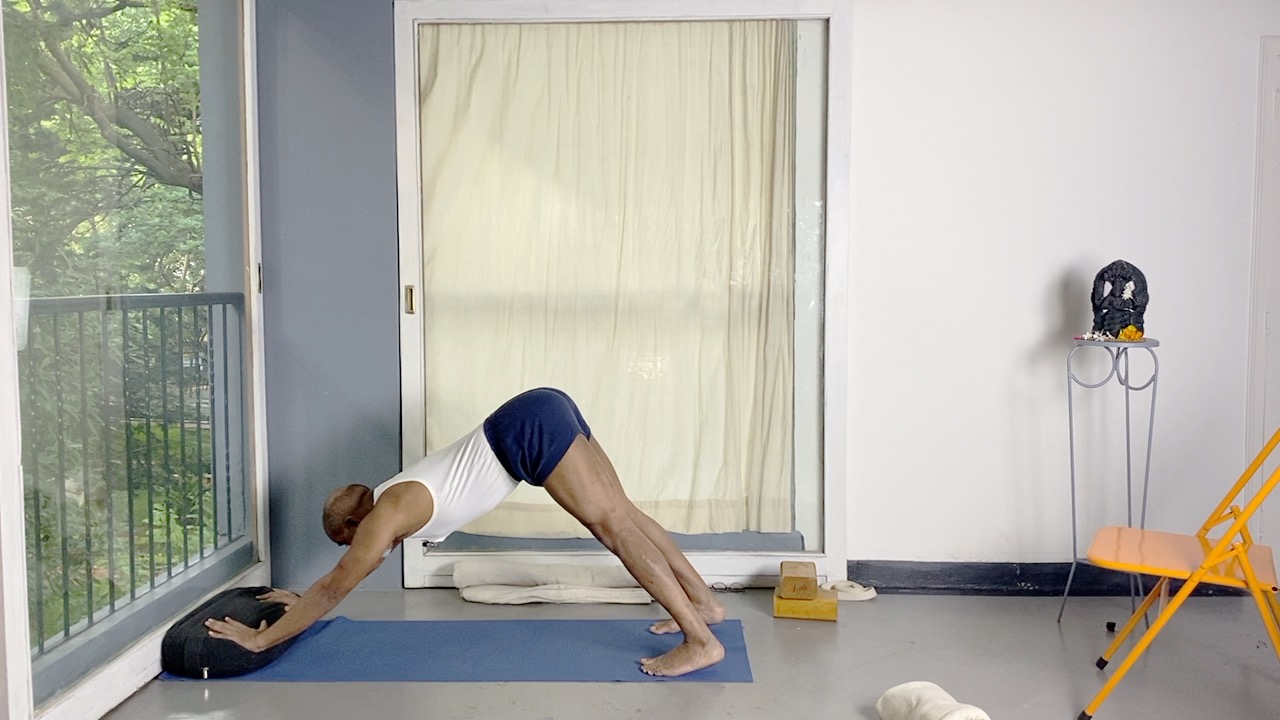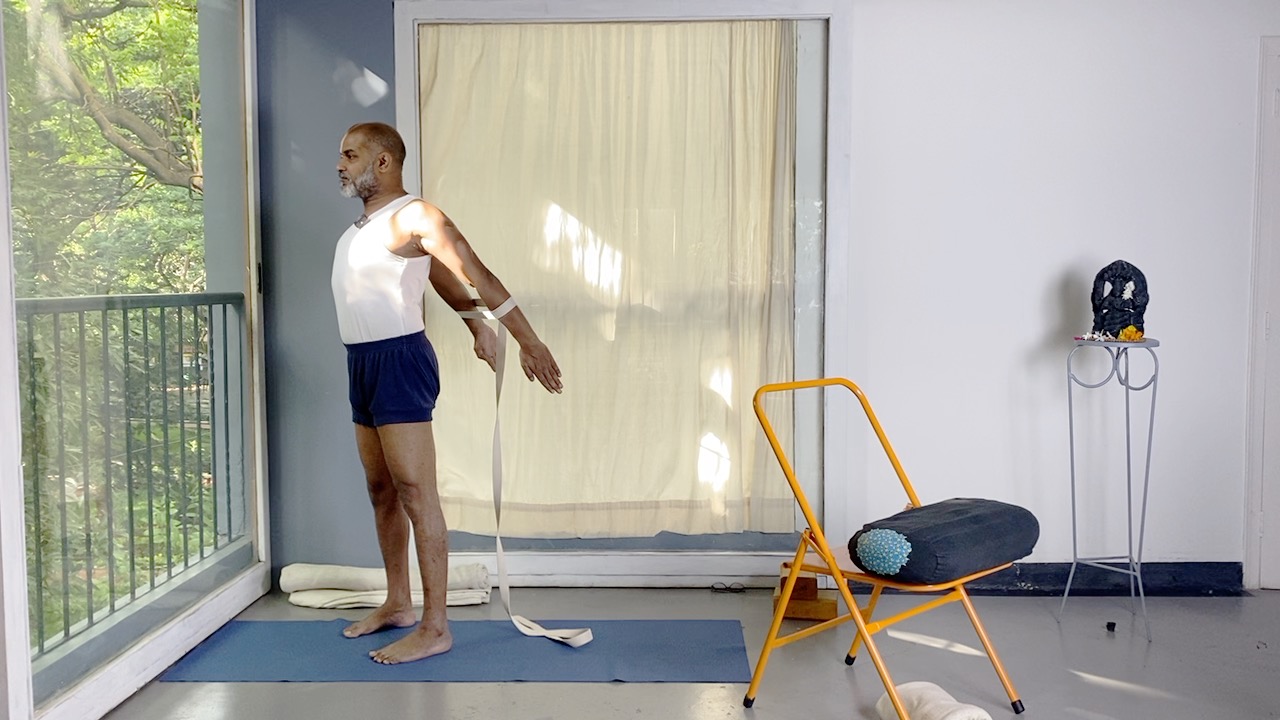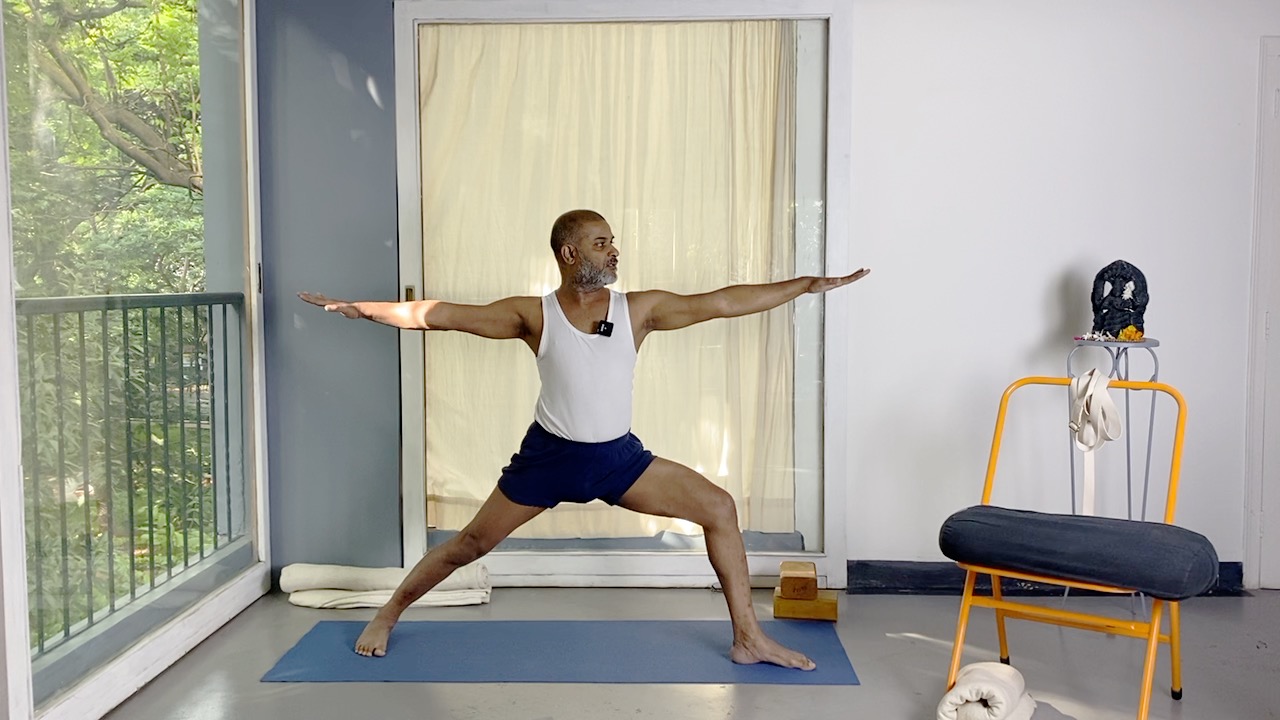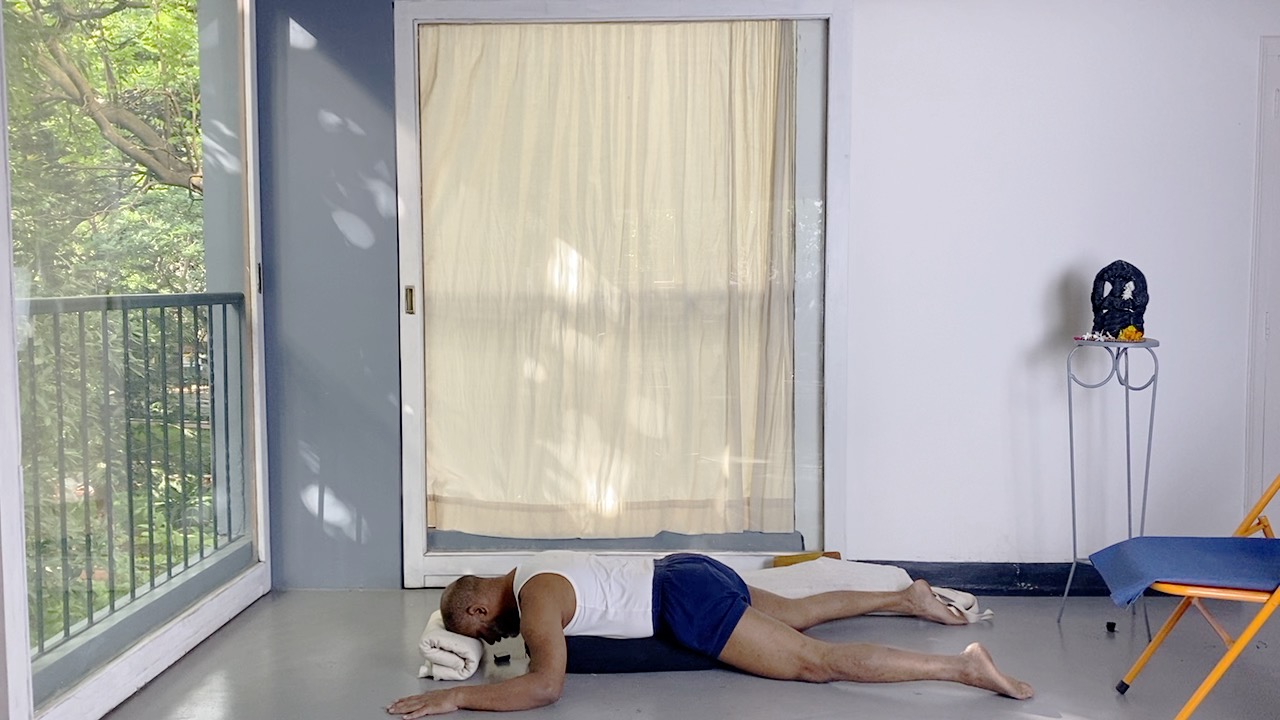A regular practice of inversions is believed to release tension, increase circulation and energy levels, and strengthen muscles. It’s also thought to promote emotional growth and calm the mind. An agitated mind will surely benefit from a practice of inversions. Arms play a major role in inverted positions.
Our lower limbs (legs) and our upper limbs (arms) are attached to our trunk through ball and socket joints – to give maximum possibility of movement of these limbs. However, unlike the hip socket , the shoulder socket is shallow. This gives the arms a wider range of movement, but also makes the shoulder joint more prone to injury. It becomes all the more important to strengthen its connection with the shoulder-blades, and to the spine, in order increase the efficiency of arm use.
This is a deceptively simple session that targets an area of the arm that we ignore in most arm movements: the ‘Triceps’ . Literally meaning ‘three-headed’, the name refers to th three points of origin of this large upper arm muscle responsible for straightening our arms. This underside of the arms are weak for many people, and with age, a visible ‘sagging’ of this area becomes apparent. Weakness in this area significantly reduces the strength of our arms, creates imbalance between biceps and triceps, and will ultimately become the weak link in shoulder and back strength. To understand the nuanced actions in this session needs some patience and experience, but its well worth the effort.
Note:
Those having shoulder injuries are advised caution in overhead arm positions. Women during the days of menstruation are advised to stay away from inversions.

